1. Ask “What stuck with you today?”
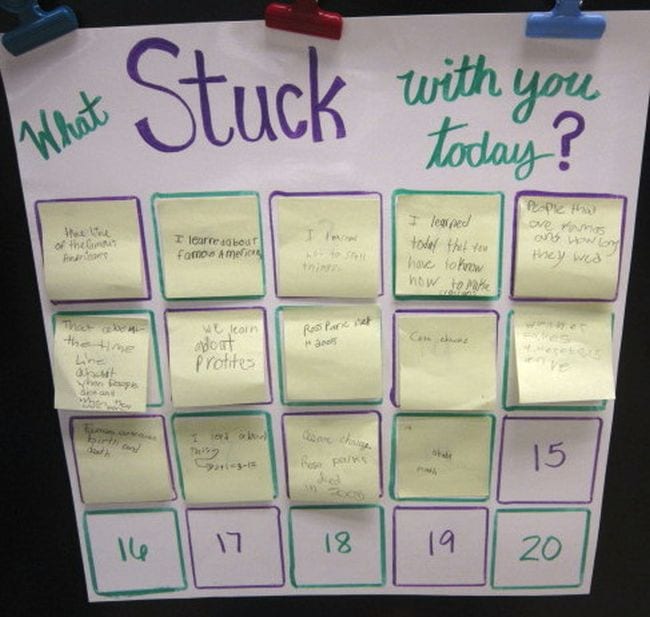
Teach From the Heart/exit tickets via teach-from-the-heart.blogspot.com
Find out what made the most impact with one simple question. Sticky notes are fantastic for exit tickets; just have each student post theirs to the board on their way out the door.
2. Lunch questions
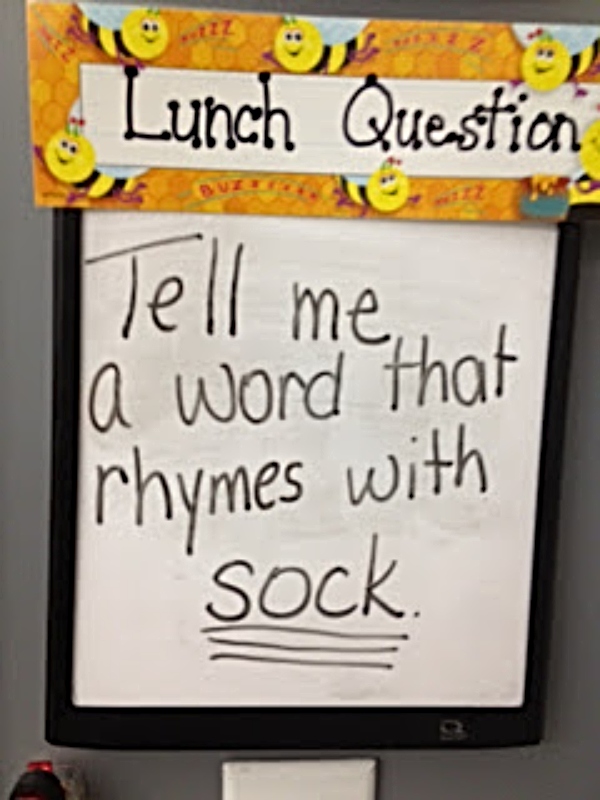
Fresh & Fun First Grade/lunch question via freshandfunfirstgrade.blogspot.com
In elementary classrooms, there’s no need to wait until the end of the day. Try using exit tickets before lunch or recess. Kids too young to write? Have them tell you their answer on their way out the door.
3. Have them “tweet” it
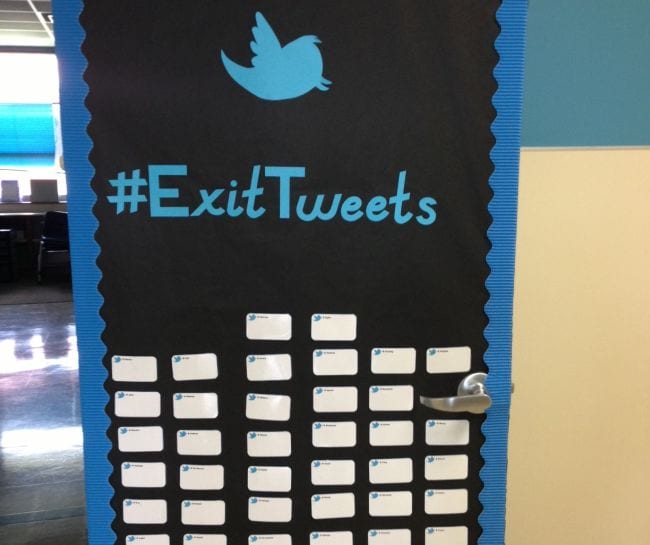
Texas Teaching Fanatic/exit tweets via texasteachingfanatic.wordpress.com
This cute “Twitter” board is sure to appeal to young social media fans. Laminate the cards so they can be reused each day.
4. Gauge understanding with emojis
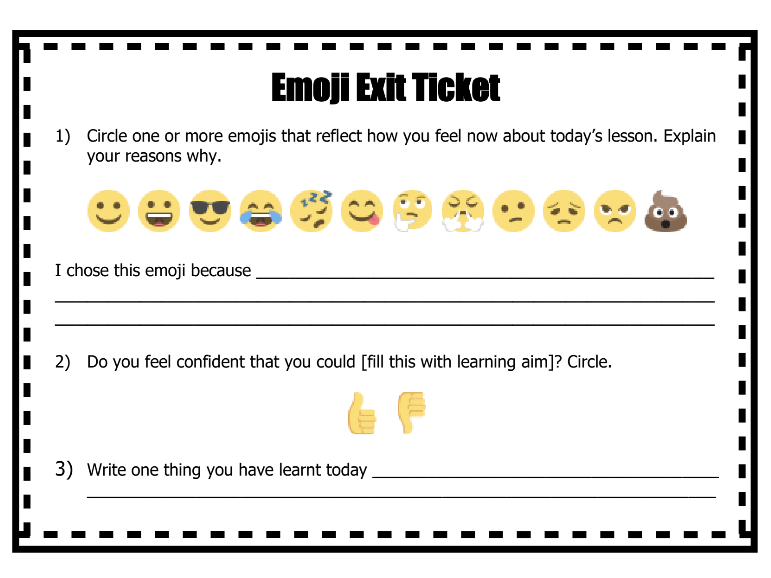
TES/emoji exit ticket via tes.com
Here’s another way to help today’s kids connect and share their progress. Have them circle an emoji on this free printable and explain why it reflects their understanding.
5. Record a Flip video

Henderson Independent School District/Flipgrid screenshot via hendersonisd.wordpress.com
Flip (formerly Flipgrid) is a totally free online tool for schools, where kids record video answers to a question posted by their teacher. This is such a cool exit ticket idea for virtual classrooms, though it works in face-to-face classrooms too.
6. Collect exit tickets on a traffic light
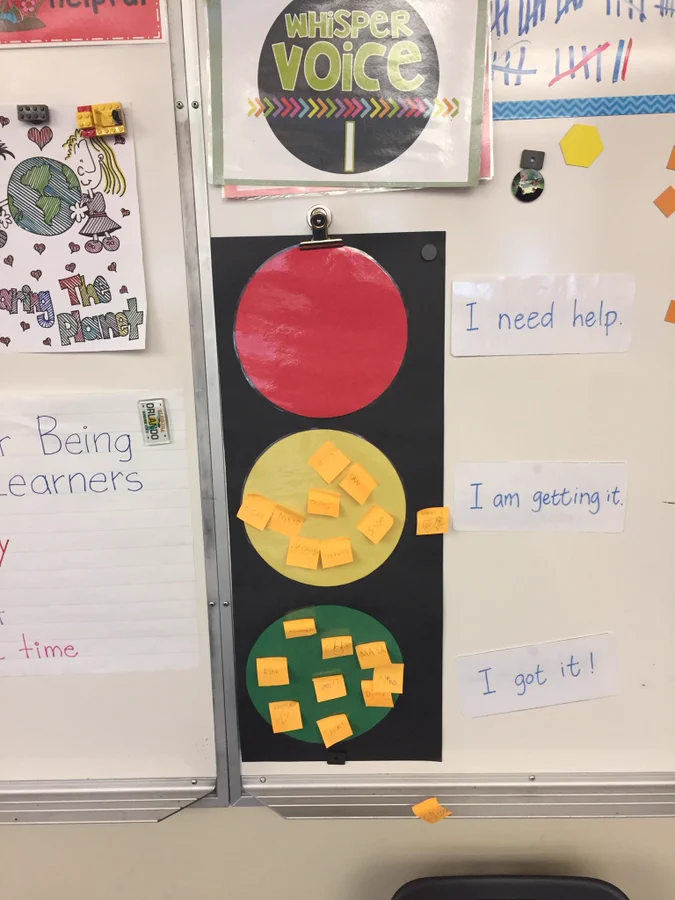
Meredith Fenton/stoplight exit tickets via X (formerly Twitter)
Have students post their tickets on a traffic light to indicate whether they’re doing fine or struggling a bit. That way, you can focus on those who need more help first.
7. Give them a prompt
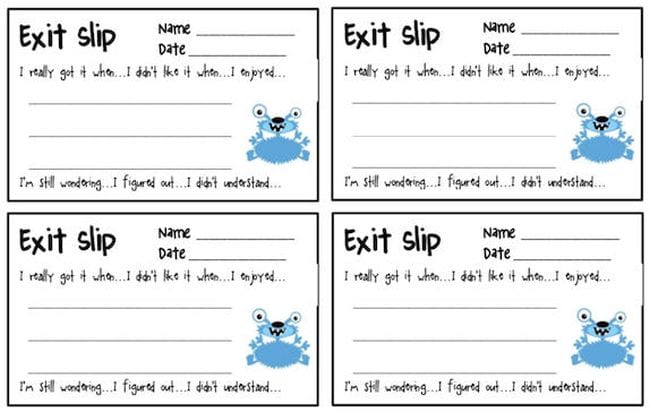
Classroom Freebies/exit slip via classroomfreebies.com
Sometimes exit tickets are very specific, but other times you just want to know what students’ general reaction was to the class that day. We like this simple option that offers a few prompts to get them started.
8. Use the “Post-It, Prove It” method of exit tickets

Smith Curriculum & Consulting/Post-It, Prove It! via smithcurriculumconsulting.com
Here’s an example of a more specific exit question. Try to ask questions that have more than one right answer, so students don’t just copy each other’s responses.
9. Let them teach others
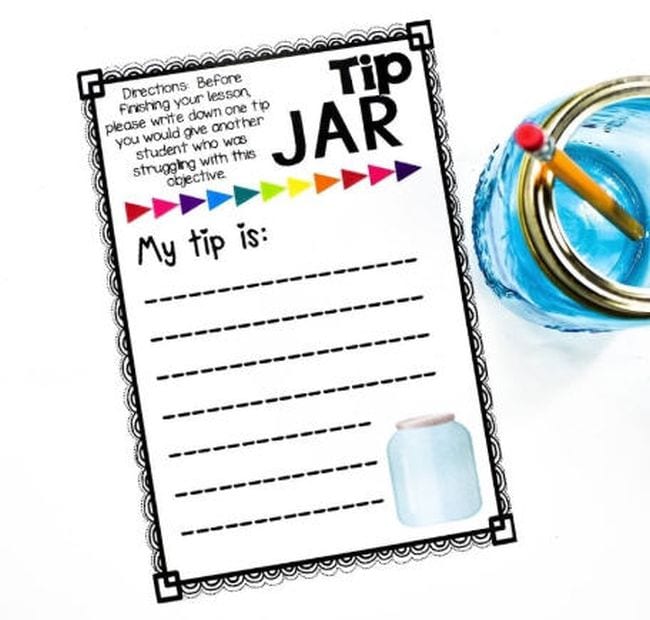
Cierra Harris Teaching/tip jar via cierraharristeaching.com
Kids often surprise us by looking at things in entirely different ways but still getting the correct answers. Their thoughts on a subject may give you ideas for helping other students who need a bit more instruction.
10. Take a poll

Marissa Ocampo/exit ticket poll via smore.com
Online polls make terrific exit tickets. Poll Everywhere is free to use, and kids can text their answers. Fun!
11. Encourage self-reflection
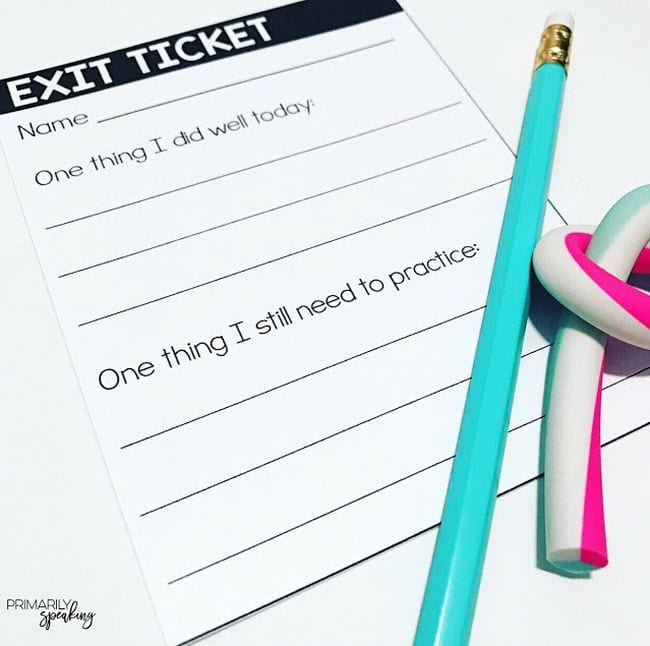
Primarily Speaking/exit ticket via primarily-speaking.com
Valuable as they are to teachers, exit tickets are also important for helping students self-assess. This version lets them reflect on their strengths and areas for improvement.
12. Tell two facts and a fib
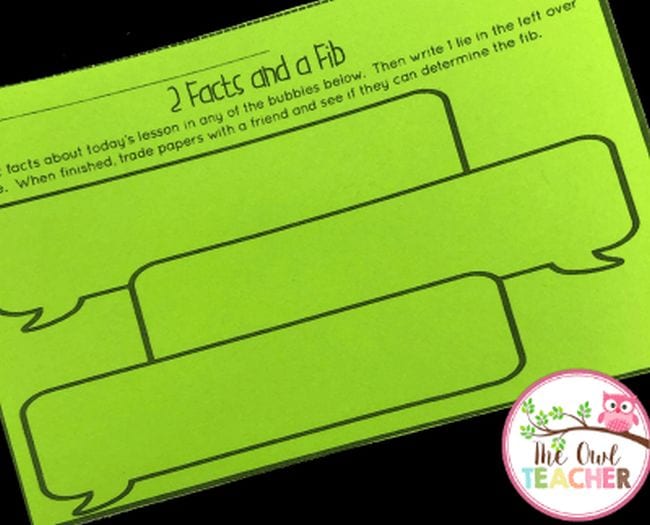
The Owl Teacher/two facts and a fib via theowlteacher.com
We love this interactive ticket idea! Kids write down two facts about today’s subject and one fib. They trade with another student to see if they can guess the incorrect fact before turning them in.
13. Try them in any class
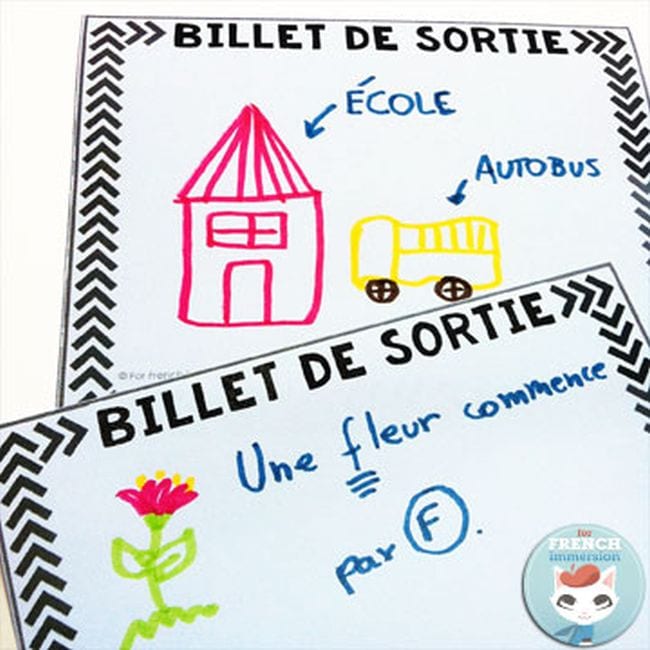
Lucy S./French exit tickets via forfrenchimmersion.com
Oui, oui, les “billets de sortie” work in French class, or Chemistry, or Art History … every teacher should try them.
14. Keep an exit ticket journal
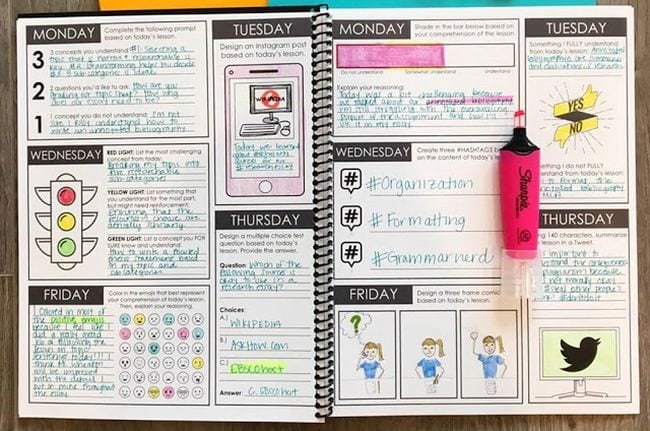
The SuperHERO Teacher/exit ticket planner via secondaryenglishcoffeeshop.blogspot.com
Give exit tickets a bit more substance by having students keep them in a journal. This gives them a nice record of learning and can help when it comes time to review for tests or write a paper.
15. Post exit tickets on Padlet
Think of Padlet as an online bulletin board. Teachers post a question or topic, and kids add their answers. See our review of Padlet here, then give it a try.
16. Print exit tickets on sticky notes
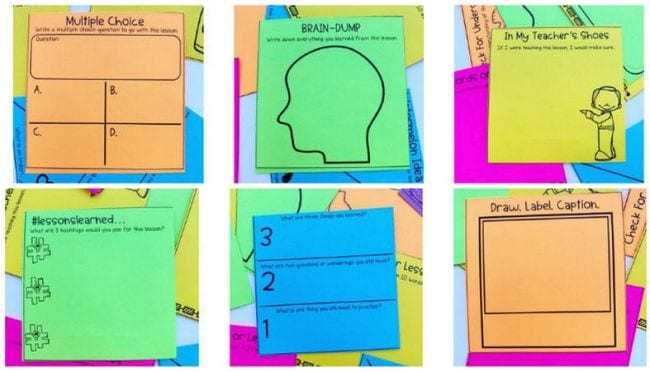
Structural Learning/exit slips via structural-learning.com
Did you know you can easily print on sticky notes? This game changer means you can easily customize exit tickets for any topic.
17. Write a 3, 2, 1 list
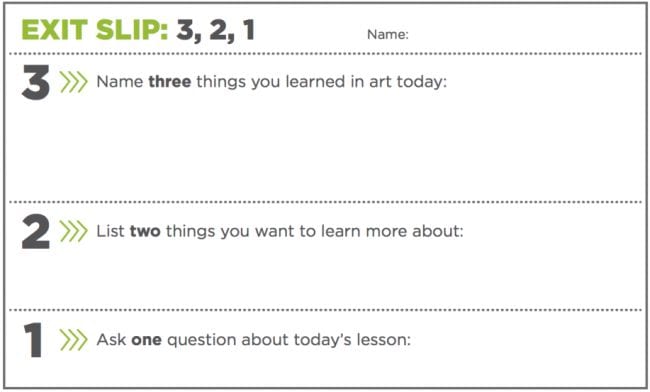
The Art of Education/exit slip via theartofeducation.edu
The 3, 2, 1 method allows kids to self-assess, but it also lets them indicate a deeper level of interest in the topic at hand.
18. Make it a mini-assessment
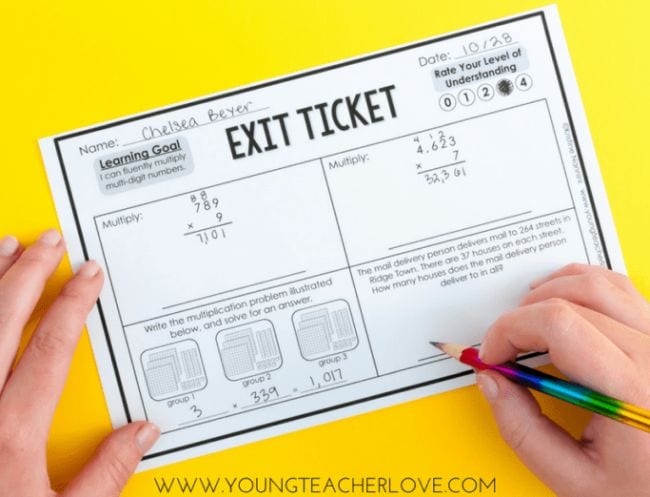
Young Teacher Love/exit ticket via kristinenannini.com
You’ll have to prep these in advance, but an assessment exit ticket is sort of like a no-stress quiz. Kids simply do their best, without worrying about grades, and you get a better feel for their progress.
19. Fill up a shopping cart
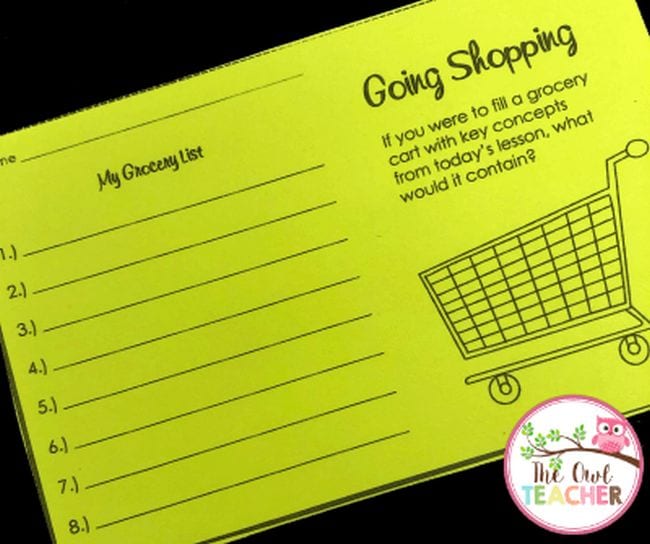
The Owl Teacher/exit ticket via theowlteacher.com
Here’s a chance to really see what their takeaways were from a lesson. This will let you see if your learning objectives are coming through as they should.
20. Follow science lab with exit tickets
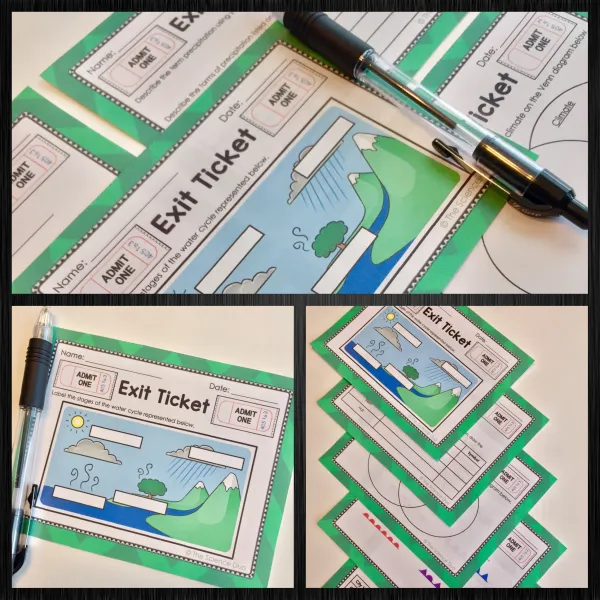
The Science Duo/exit tickets via thescienceduo.com
Hands-on science exploration should be followed up with written observations and conclusions. Use exit tickets to check for understanding.
21. Sum it up with one sentence
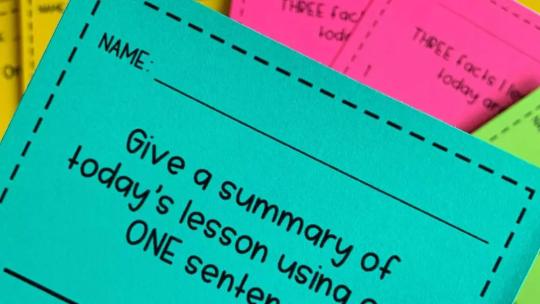
Reading Rockets/exit tickets via readingrockets.org
Help your students distill what the day’s lesson was all about with a one-sentence summary. This requires students to prioritize the most important elements of the activity and reveals whether they are getting the “big picture.”
22. Keep it simple
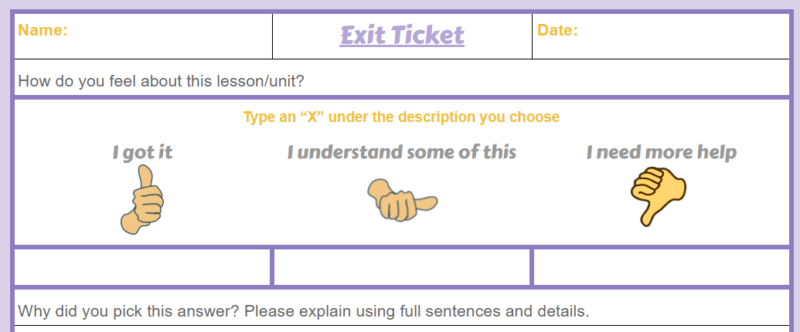
Structural Learning/exit ticket via structural-learning.com
Sometimes you look out at your students and you see a lot of blank stares. When this happens, take a quick moment to use this exit slip. It will help you assess who’s on board and who needs further instruction.
23. Change it up
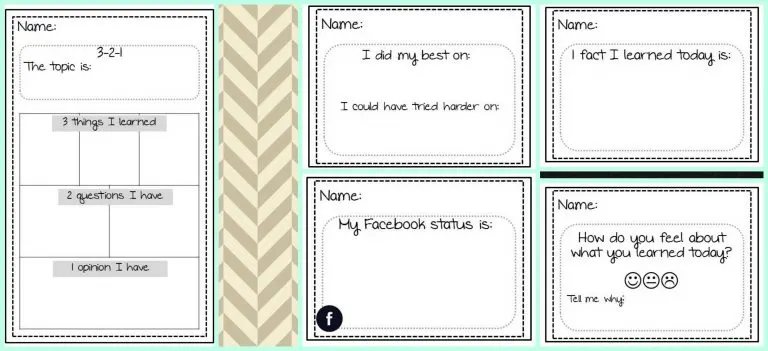
The Curriculum Corner/exit tickets via thecurriculumcorner.com
If you always use the same exit tickets after a lesson, your students might go on autopilot. Change up your format by asking students how they’re doing in a variety of ways.
24. Match your exit tickets with your teaching philosophy
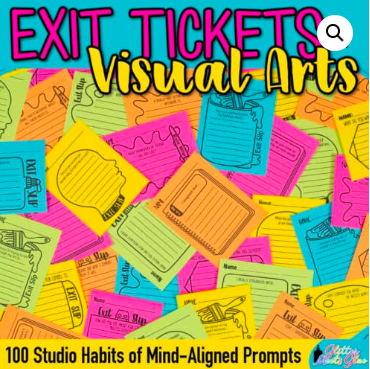
Glitter Meets Glue/exit tickets via glittermeetsglue.com
These colorful prompts were developed to support the Habits of Mind framework. Choose from questions that encourage your students to observe, reflect, and explore what they’re learning.
25. Collect answers on Google Forms
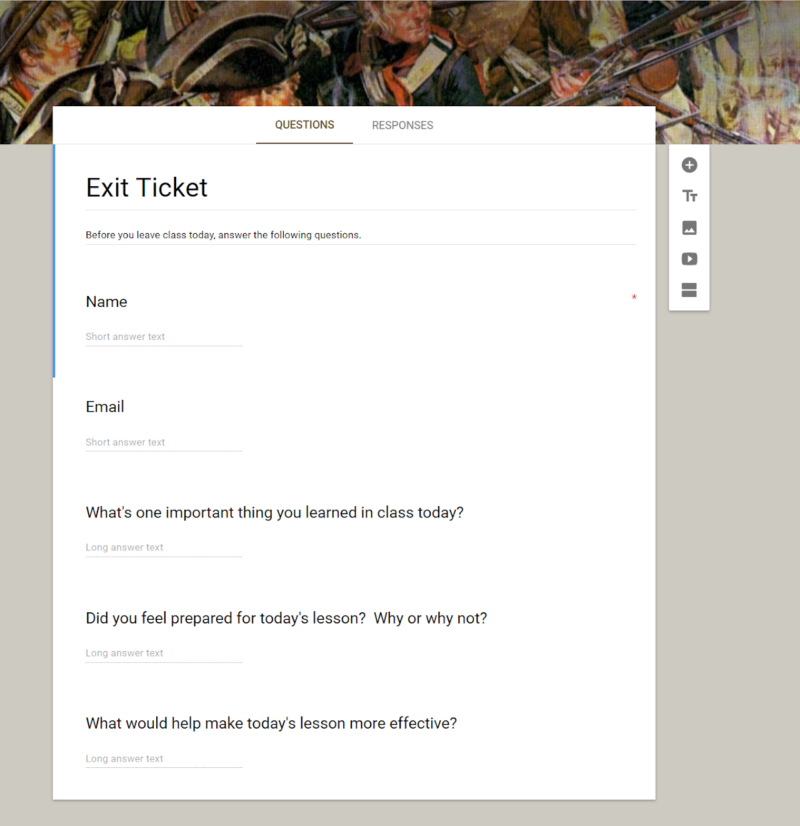
Google Classroom Tutorial/exit ticket via sites.google.com
Teaching online or looking to save paper? Collect your tickets using Google Forms instead. This is especially useful if you’re already using Google Classroom.
26. Take time to analyze exit tickets
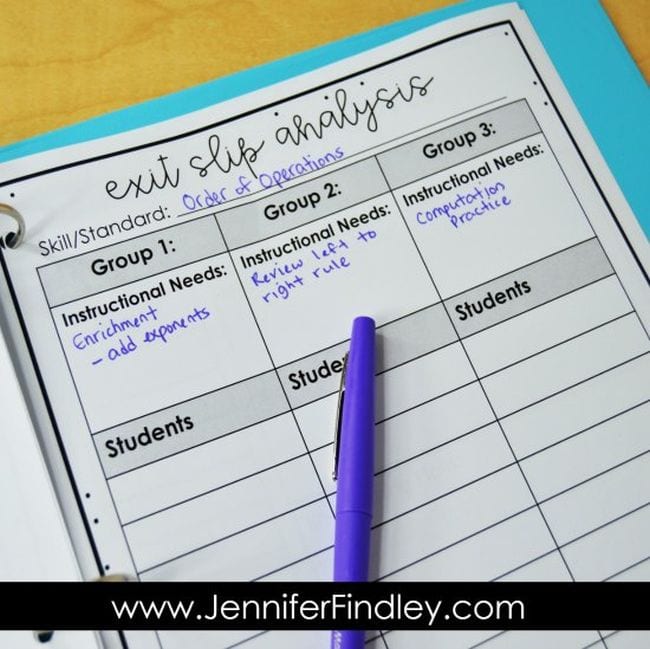
Jennifer Findley/exit slip analysis via jenniferfindley.com
Make sure your exit tickets are worth the effort. Spend a little time at the end of each class or day looking over student responses, and make notes about any needs they indicate.

